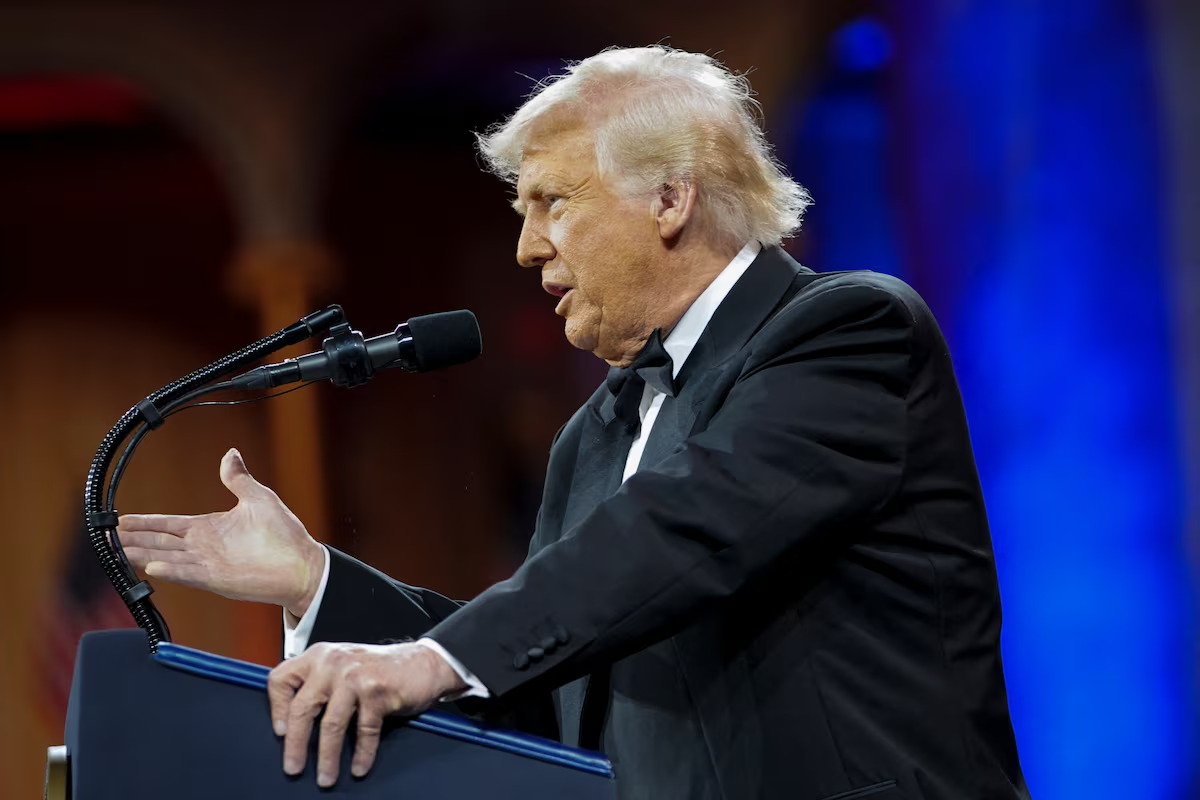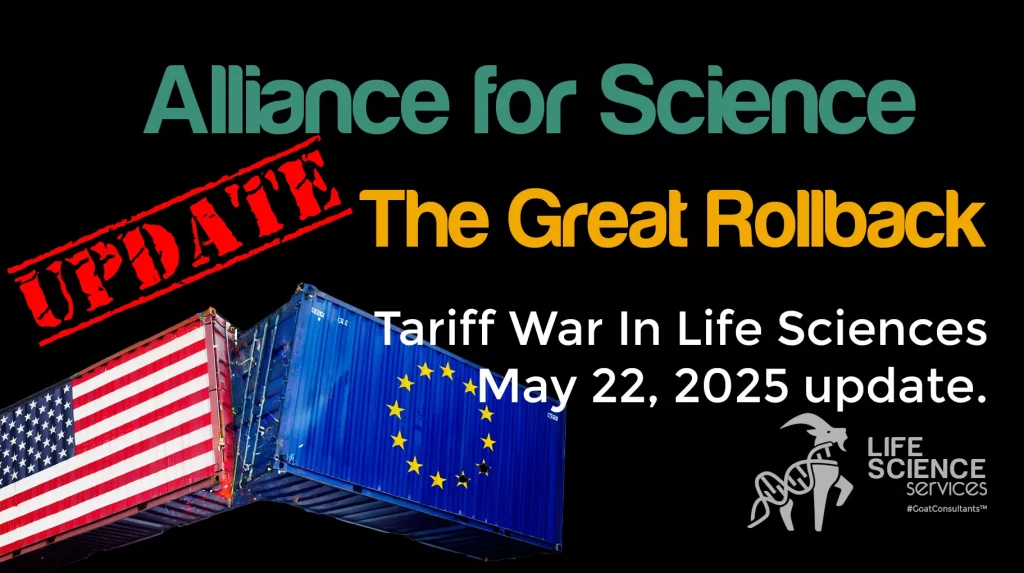
Tariff Exemptions in Life Sciences Industry
Since our original article “Tariff War in Life Sciences” (March 18, 2025), the U.S. government has released an updated list of tariff exemptions in life sciences under its revised trade agreements. This latest revision, effective April 2, 2025, provides critical insight into how U.S. trade policy is shaping the pharmaceutical and biotech sectors.

Downloand the list of exemptions
The Scope of Pharma & Biotech Exemptions: 60% of Inputs Covered

U.S. President Donald Trump announced that the U.S. will soon introduce tariffs on pharmaceutical imports, aiming to bolster domestic drug manufacturing. Trump criticized the country’s reliance on foreign-made medicines, especially from China and India. The proposed tariffs are part of a broader strategy to reshape America’s supply chains and reduce vulnerability in critical sectors. Analysts warn that such measures could drive up drug prices and disrupt global pharmaceutical trade, while Trump’s team argues it will incentivize American innovation and self-reliance in healthcare manufacturing.
Read the full article on Reuters here here.
Image rights: REUTERS/Nathan Howard
A review of the newly released Annex II shows that roughly 60% of pharmaceutical inputs and finished medicines are now tariff-exempt. This includes:
- 25 finished medicines, such as antibiotics, insulin, hormonal therapies, vaccines, and blood-derived treatments.
- APIs (active pharmaceutical ingredients), excipients, and biologics, which are essential raw materials for drug production.
- Key diagnostic and therapeutic reagents, particularly for vaccine development and immunological treatments.
While this is a step in the right direction for the pharmaceutical supply chain, it does not mean that the entire life sciences industry is benefiting from these exemptions.
The Total Tariff Exemptions in Life Sciences Represent only 40% of The Industry
When we expand our view to the entire life sciences ecosystem, the picture changes. This broader landscape includes pharmaceuticals, biotech, medical devices, diagnostics, and manufacturing infrastructure. Within that context, the tariff exemptions only cover about 40% of total industry inputs.
This is because:
- Capital expenditures (CAPEX) for pharmaceutical and biotech manufacturing remain subject to tariffs.
- Medical devices remain largely excluded, including imaging equipment, diagnostic tools, and surgical instruments.
- Biomanufacturing consumables (e.g., single-use bioprocessing systems, chromatography columns, filters) are not comprehensively covered.
The Contradiction: Tariffs on CAPEX vs. U.S. Industrial Policy
Perhaps the most striking contradiction in this policy is that tariffs will still be levied on critical manufacturing equipment and infrastructure investments (CAPEX).
This directly undermines the Trump administration’s broader goal of “re-arming” U.S. industry. That strategy is meant to reduce reliance on foreign suppliers and strengthen domestic production. But U.S. pharma and biotech firms still face tariffs on biomanufacturing equipment and cleanroom technology. They also pay duties on lab automation and infrastructure required for local production. These added costs make reshoring significantly more expensive. That could discourage the very industrial expansion the administration says it wants to promote.
Strategic Recommendations to Master Tariff Exemptions in Life Sciences
To navigate this complex environment, an ERP system with trade compliance and tariff management modules is a must-have to support companies:
- Automate HTS Classification – Ensures the correct HS codes for all raw materials and finished products.
- Track Tariffs in Real Time – Updates duty rates instantly as trade policies change. If a raw material is imported duty-free, its preferential status can be maintained under certain conditions.
- Generate Customs Documentation – Reduces errors in commercial invoices, bills of lading, and certificates of origin.
- Optimize Supplier Decisions – Helps businesses source materials from duty-free zones or low-tariff countries.
- Predict Cost Impacts – Provides tariff simulation models for better financial planning.
- Support Duty Drawbacks – If an IMP pack is exported, companies may claim refunds on previously paid U.S. import duties.

If an API sourced from Europe and syringes from China are imported into the U.S. for processing, ERP systems can track them separately to qualify for re-export duty exemptions.

#GOATConsultants™-Level Insights:
Turn Tariff Risks into Supply Chain Efficiency
To protect against rising tariffs and customs risks, companies should:
- Comprehensive Supply Chain Evaluation: Assess the entire supply chain to identify stages where tariffs apply and explore possibilities to restructure operations to minimize tariff liabilities.
- Accurate Documentation: Maintain meticulous records and ensure all shipping documents accurately reflect the product’s origin, classification, and value to facilitate smoother customs clearance.
- Engage Trade Compliance Experts: Consult with professionals specializing in international trade compliance to stay abreast of evolving regulations and implement best practices.
- Explore Duty Mitigation Programs: Investigate programs such as Foreign Trade Zones (FTZs) or bonded warehouses that may offer relief or deferral of tariffs under certain conditions.
Tariffs should not just be seen as an extra cost but as an opportunity to optimize manufacturing processes, improve supply chain efficiency, and reduce compliance risks.
Companies that invest in ERP-driven customs management will gain a competitive edge in the evolving global trade environment.
The current tariff strategy partially supports pharmaceutical manufacturing but falls short of fostering a fully competitive and self-sufficient U.S. life sciences industry. Without a more holistic approach, the goal of industrial rearmament may just remain a goal, not a reality.
Join us for a free 30 minutes call.
Enjoy more great insights:
- Latest News On Tariffs In Life Sciences
- Trump’s Biotech Policy Is Reshaping Global Science and Pharma Supply Chains
- Tariff Exemptions in Life Sciences – A Closer Look at the April 2025 Update
- Licensing Agreements In Life Sciences Amidst Trade Wars and Regulatory Shifts
- Tariff War In Life Sciences: How to Manage Customs Risks and Costs
- Medicine Shortages in the EU: Root Causes and Strategic Solutions
Learn more about financial management in the life sciences.
- Mastering Licensing Agreements Financial Management for Life Sciences Success

- Is Finance The Weak Link in Biotech Innovation?






